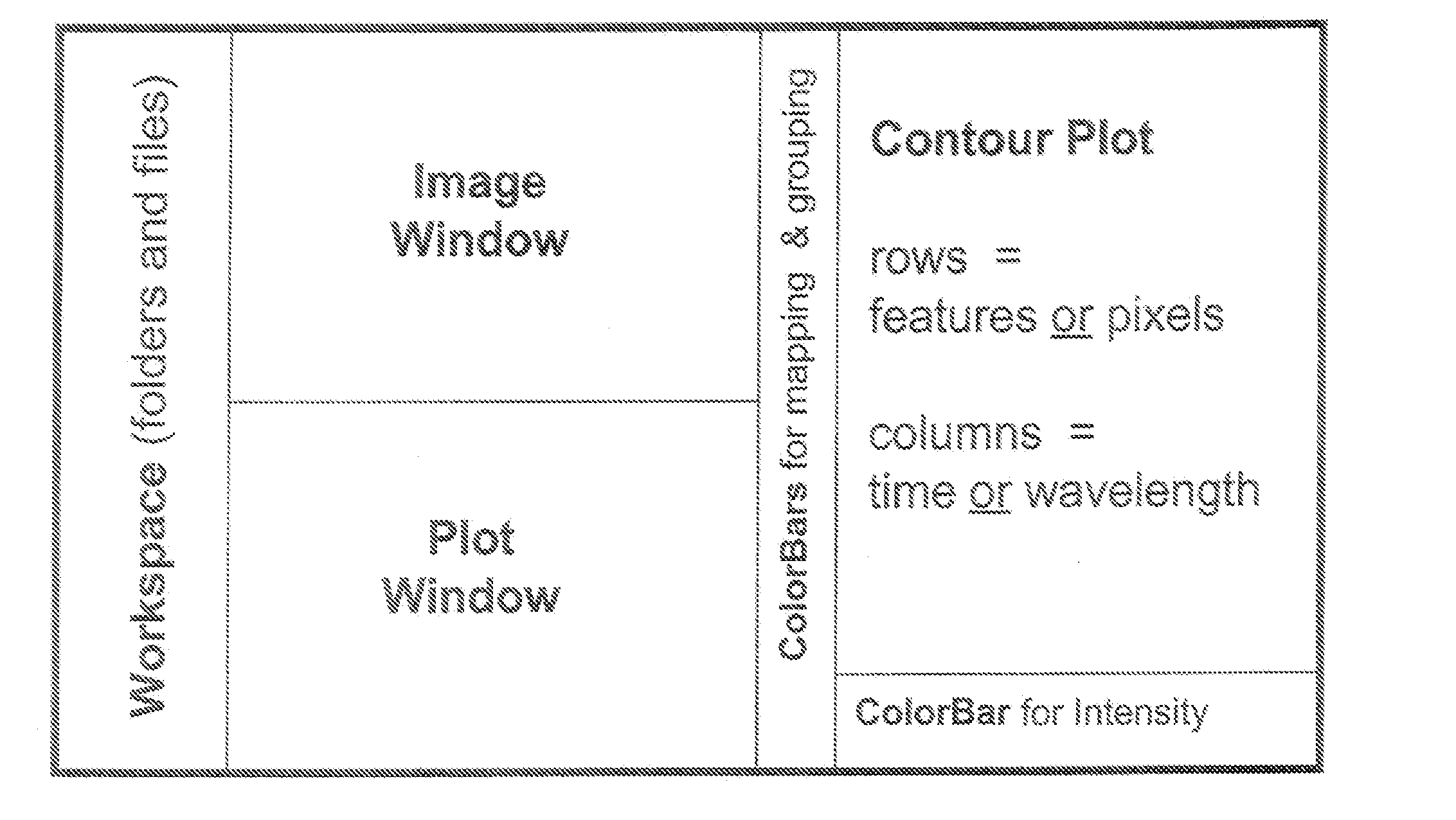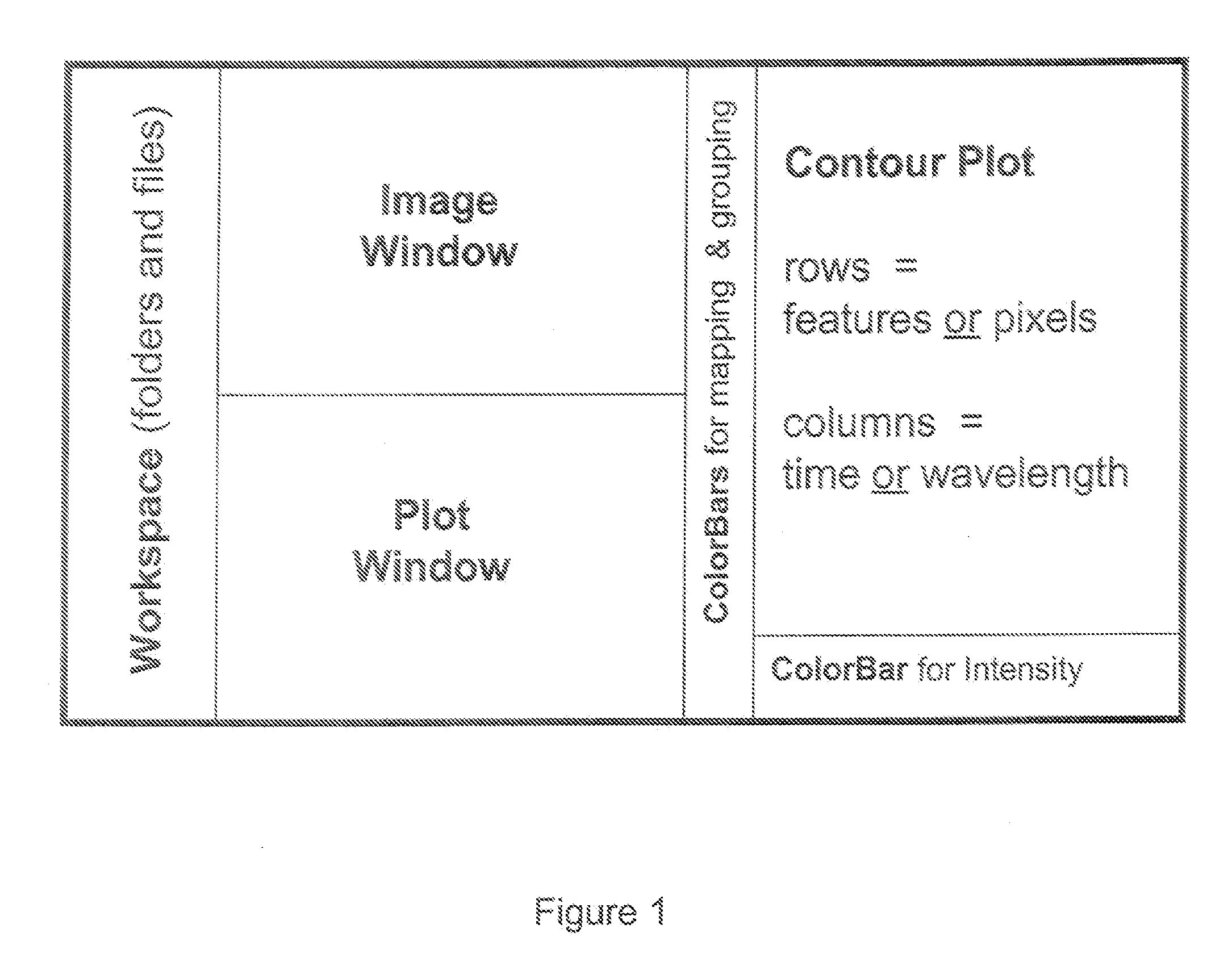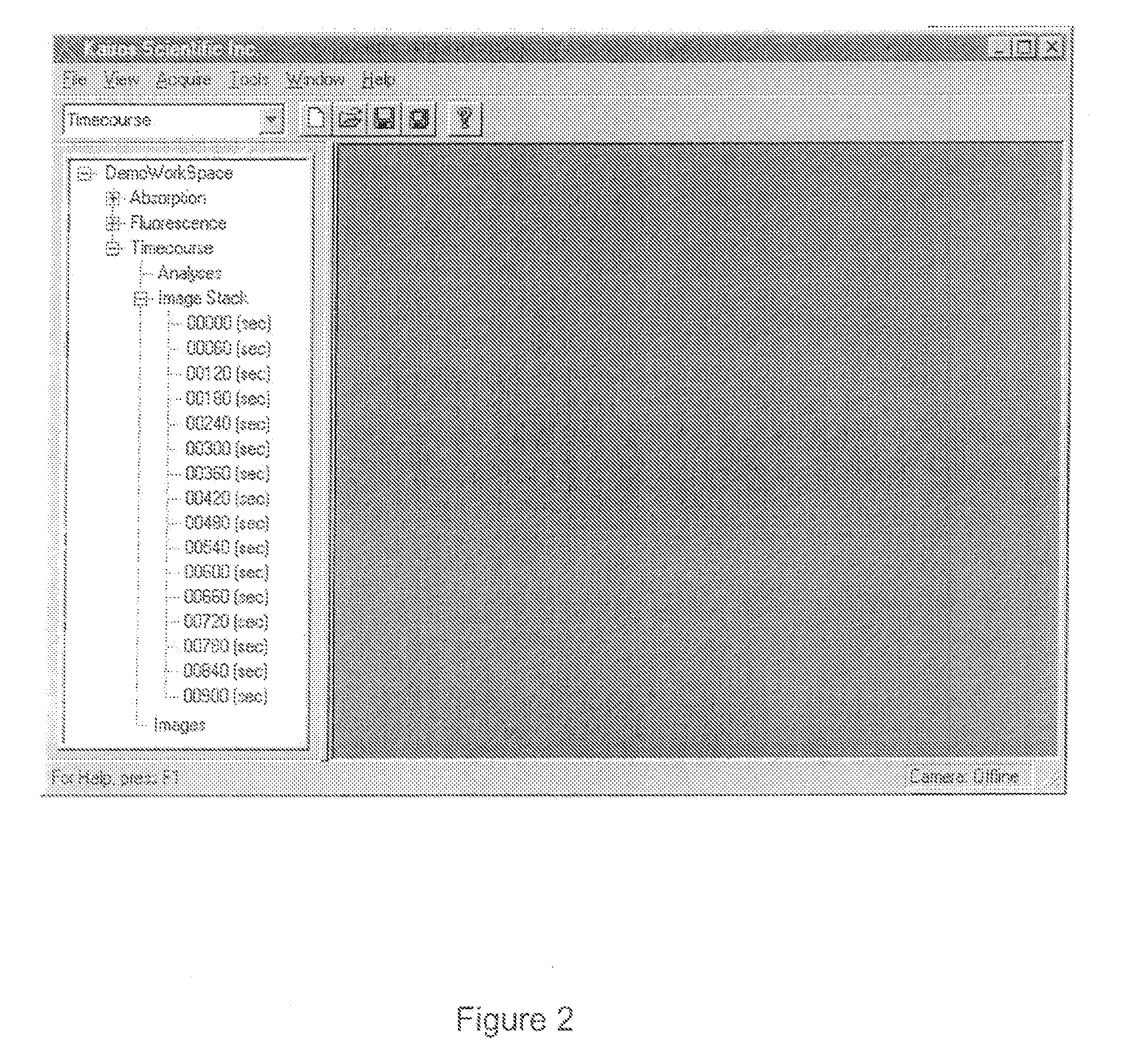Visualization and Processing of Multidimensional Data Using Prefiltered and Sorting Criteria
a multi-dimensional data and filtering technology, applied in the field of visualizing and processing multi-dimensional data, can solve the problems of not being able to sort single-pixel spectra without additional parameters or human intervention, burdensome processing time, prior art sorting algorithms, etc., and achieve the effect of rapid and efficient extraction of useful information and facilitation of independent sorting and backcoloring of individual groups
- Summary
- Abstract
- Description
- Claims
- Application Information
AI Technical Summary
Benefits of technology
Problems solved by technology
Method used
Image
Examples
example 1
[0070] In this example, an analysis was first performed using the spectral data obtained at the end of a 45 minute kinetic run to select pixels with the greatest 610 nm: 540 nm absorbance ratio. After data acquisition, the following steps were followed: [0071] 1. The 610 nm image from the Absorbance project was flat-fielded with the T0 image from the Timecourse project in order to generate a reference image. [0072] 2. Using this reference image, a pixel-based spectral analysis is created. The software wizard automatically identifies pixels with grayvalues in the lowest tenth percentile. These pixels correspond to the pixels with the highest absorbances at 610 nm. As previously discussed, the user can override these automatic selections by painting on the image or redefining the high and low grayvalue range for ROIs. [0073] 3. A microcolony-free region on the edge of the membrane disk is selected for I0. These values are input into the Beer-Lambert equation to calculate pixel absorba...
example 2
[0079] In this second sorting example, an analysis was first performed using the timecourse data obtained during a 45 minute kinetic run to select pixels meeting specific temporal criteria. In other examples, this kinetic run can be longer or shorter. In this case, the temporal criterion is the fastest absorbance increase at 610 nm. The following steps were followed: [0080] 1. The T=600 second image is flat-fielded with the To image from the Timecourse project in order to generate a reference image. [0081] 2. Using this reference image, a pixel-based kinetic analysis is created. The software wizard automatically identifies pixels with grayvalues in the lowest tenth percentile, corresponding to high absorbance at 610 nm and significant Abg-catalyzed product formation. As previously discussed, the user can override these automatic selections by painting on the image or redefining the high and low grayvalue range for ROIs. [0082] 3. A microcolony-free region on the edge of the membrane...
example 3
[0087] In a third sorting example, spectral data obtained at the end of a kinetic run (or during the run) is used to determine ROIs meeting a specific spectral criteria without performing a complete contour plot based spectral analysis. This is done by generating a reference image from absorbance images as previously described. Using the Abg experiment as an example, the 610 nm image can be divided by the 540 nm image and the pixels with the lowest grayvalues would correspond to the ‘bluest’ pixels. If a satisfactory pixel cutoff value has been previously determined, one can use this cutoff value to select ROIs without performing the entire spectral analysis and sorting described in steps 1-5 of EXAMPLE 1 above. A single reference image based on spectral data is generated and this image is used for the kinetic analysis as listed in steps 7-8.
PUM
 Login to View More
Login to View More Abstract
Description
Claims
Application Information
 Login to View More
Login to View More - R&D
- Intellectual Property
- Life Sciences
- Materials
- Tech Scout
- Unparalleled Data Quality
- Higher Quality Content
- 60% Fewer Hallucinations
Browse by: Latest US Patents, China's latest patents, Technical Efficacy Thesaurus, Application Domain, Technology Topic, Popular Technical Reports.
© 2025 PatSnap. All rights reserved.Legal|Privacy policy|Modern Slavery Act Transparency Statement|Sitemap|About US| Contact US: help@patsnap.com



